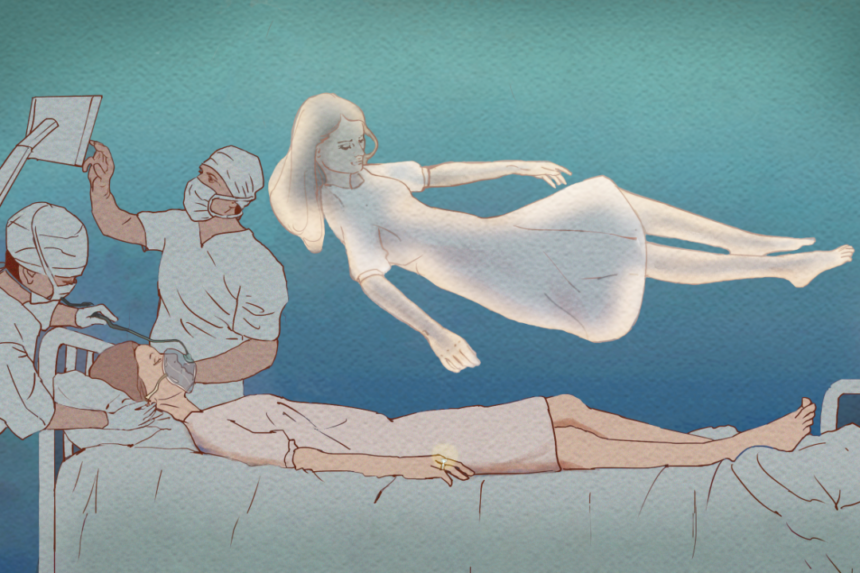Born blind, Vicki Umipeg had never seen herself until a near-death experience on the operating table at the age of 22. Prematurely born at 22 weeks, Vicki’s optic nerve was damaged due to high oxygen in the incubator, leaving her completely blind. However, during a severe accident in Seattle that resulted in skull fractures and other injuries, Vicki had an out-of-body experience where she saw herself on the operating table for the first time. This experience led her to realize her blindness and see her wedding ring, which she had never seen before.
Vicki’s case was studied by Dr. Jeffrey Long, a radiation oncologist who has dedicated over 25 years to researching near-death experiences. He summarized common experiences in NDEs, such as out-of-body experiences, encountering deceased loved ones, and feeling overwhelming love and peace. Vicki’s panoramic vision during her NDE was particularly unique, as she had 360-degree vision instead of the typical pie-shaped visual field.
Despite initial skepticism and dismissal by the scientific community, the study of NDEs has gained credibility over the past few decades. The International Association for Near-Death Studies was established in 1978, leading to a more scientific exploration of these extraordinary experiences. Long’s research, which includes over 4,000 cases of NDEs, has shown that nearly 95% of respondents believe their experience was “definitely real.”
Despite numerous skeptical explanations for NDEs, including hallucinations induced by decreased oxygen levels and brain endorphins, none of these hypotheses fully explain the entirety of the near-death experience. Long’s research has shown that NDEs cannot be solely attributed to medical conditions like hypoxia or endorphins, as the experiences reported by individuals are often vivid and detailed beyond what can be explained by these factors. Dr. Long stated that seizures typically lead to altered consciousness, not the clear and consistent experiences associated with near-death experiences (NDEs). Ernst Rodin, a former president of the American Clinical Neurophysiology Society, mentioned that in his decades of experience, he had never seen NDE symptoms in patients with temporal lobe seizures. A study published in The Lancet also found that NDEs were not linked to medication or fear of death.
NDEs have been reported during general anesthesia, which is considered impossible as the patient should not have any conscious experiences. Even when a patient’s heart stops during anesthesia, they still have vivid NDEs, challenging the idea that these experiences are purely physical in nature.
Contrary to the belief that NDEs are culturally or religiously influenced, Dr. Long found that the experiences are remarkably similar worldwide, regardless of background. After the 1976 Tangshan earthquake in China, survivors reported experiences consistent with Western NDEs. Even young children, who have minimal cultural influences, reported similar NDEs to older individuals.
Many NDE reports include encounters with a radiant being of light, often interpreted as God. After studying 420 NDE cases, Dr. Long found a significant increase in belief in the existence of God post-NDE. Encounters with God in NDEs typically involve feelings of love, acceptance, and unity.
Overall, NDE research provides evidence for consciousness beyond the physical body, offering a positive message about the existence of a more eternal aspect of human life.
Source link





